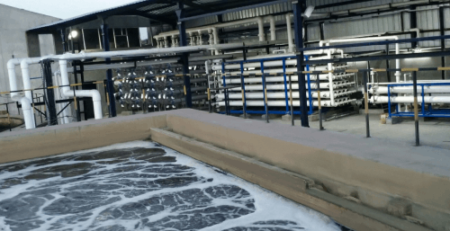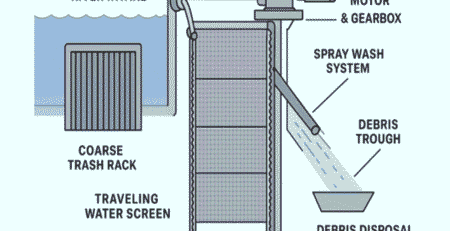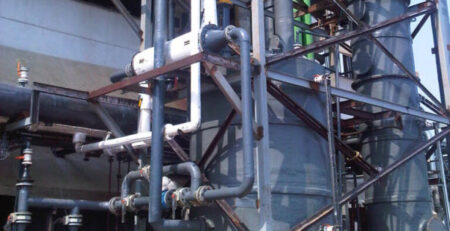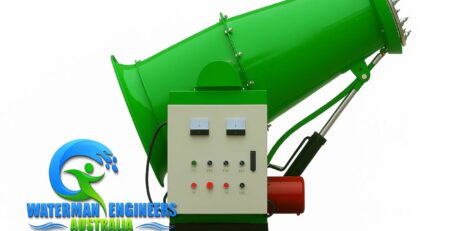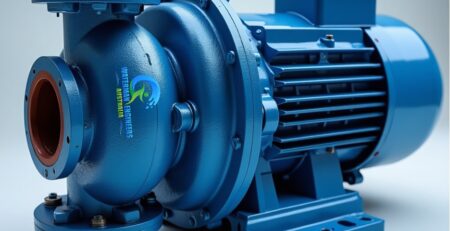Slaughterhouses, Rendering, and Abattoirs’ Wastewater Treatment Plant
- Introduction
Wastewater treatment in slaughterhouses, rendering, and abattoir facilities is a critical component of environmental management and operational efficiency. These facilities generate high-strength wastewater rich in organic materials, nutrients, blood, fats, and solids, which require specialized treatment to meet regulatory discharge standards and reduce environmental impacts. This document provides an in-depth overview of the characteristics, treatment technologies, design considerations, operation, and future trends related to wastewater treatment plants in these industries.
- Characteristics of Wastewater
Wastewater from slaughterhouses and rendering facilities is characterized by:
- High concentrations of biochemical oxygen demand (BOD) and chemical oxygen demand (COD)
- Elevated levels of total suspended solids (TSS)
- Presence of fats, oils, and grease (FOG)
- Nutrients such as nitrogen and phosphorus
- Pathogens including bacteria and viruses
- Variable flow and load depending on production schedules
The complex composition demands multi-stage treatment processes capable of handling organic matter, solids, nutrients, and pathogens effectively.
- Regulatory Requirements
Wastewater treatment plants must comply with local and national environmental regulations concerning:
- Effluent quality limits for BOD, COD, TSS, nutrients, and pathogens
- Discharge permits and monitoring requirements
- Sludge disposal and management standards
- Odor and air emission controls
- Reporting and documentation obligations
Adherence to these regulations ensures protection of water bodies and public health while minimizing the facility’s environmental footprint.
- Advanced Treatment Technologies
Several advanced technologies are employed to enhance treatment efficiency and effluent quality, including:
- Screening and grit removal to eliminate large solids
- Dissolved Air Flotation (DAF) for removal of fats, oils, and greases
- Activated sludge and sequencing batch reactors (SBR) for biological treatment
- Anaerobic digestion for sludge stabilization and biogas production
- Membrane bioreactors (MBR) for improved solids separation and pathogen removal
- Nutrient removal systems using chemical precipitation or biological nutrient removal (BNR)
- Design Considerations
Key design factors for wastewater treatment plants include:
- Accurate assessment of wastewater volume and composition
- Selection of treatment processes suited to waste characteristics
- Provision for peak flows and load variations
- Flexibility for future capacity expansion or process upgrades
- Integration of odor control and sludge management systems
- Space availability and layout optimization
- Energy efficiency and sustainability features
- Operation and Maintenance
Successful operation depends on:
- Skilled and trained operators
- Routine inspection and preventive maintenance of equipment
- Monitoring of influent and effluent quality
- Process control optimization using instrumentation and automation
- Prompt troubleshooting and corrective actions
- Safety protocols for handling hazardous materials
- Energy Efficiency and Sustainability
Incorporating energy-efficient technologies and sustainable practices helps reduce operational costs and environmental impact:
- Use of energy-efficient motors and pumps
- Recovery of biogas from anaerobic digestion for on-site power generation
- Water reuse and recycling within the facility
- Implementation of automation and smart monitoring for optimized energy use
- Integration of renewable energy sources
- Sludge Management and Disposal
Sludge is a major by-product of wastewater treatment in slaughterhouses and rendering facilities. Proper management is critical to prevent environmental contamination, minimize odors, and comply with disposal regulations.
8.1 Sludge Characteristics
- High Organic Content: Rich in proteins, fats, and pathogens.
- Variable Composition: Depending on operations (e.g., blood volume, cleaning frequency).
- Odor Potential: High risk of generating hydrogen sulfide and other noxious gases.
8.2 Sludge Thickening
- Gravity Thickening: Ideal for primary sludge; allows solids to settle by gravity.
- Dissolved Air Flotation (DAF): Efficient for thickening biological or mixed sludge.
- Rotary Drum Thickeners: Compact and suitable for moderate sludge volumes.
8.3 Sludge Stabilization
- Anaerobic Digestion: Reduces organic load and generates biogas; suitable for high-strength sludge.
- Aerobic Digestion: Used for smaller plants or where biogas recovery is not viable.
- Lime Stabilization: Adds lime to raise pH and eliminate pathogens.
8.4 Dewatering Technologies
- Belt Filter Presses: Cost-effective and widely used for large volumes.
- Centrifuges: High-speed separation, compact footprint.
- Screw Presses: Energy efficient, low maintenance.
- Drying Beds: Passive systems for small-scale or rural settings with ample land.
8.5 Sludge Disposal Options
- Land Application: Dewatered sludge can be applied to agricultural land if pathogen-free and approved by regulators.
- Composting: Blending with bulking agents (e.g., sawdust) creates soil conditioners.
- Incineration: High energy demand but effective in reducing volume and eliminating contaminants.
- Landfilling: Requires proper containment and leachate control; last-resort option.
8.6 Resource Recovery from Sludge
- Energy Recovery: Use of sludge in waste-to-energy facilities or as RDF (refuse-derived fuel).
- Biochar Production: Pyrolysis of dried sludge yields carbon-rich biochar.
- Nutrient Recovery: Recovery of nitrogen and phosphorus for fertilizers.
8.7 Odor and Vector Control
- Enclosed Systems: Minimize air exposure to reduce odors.
- Chemical Additives: Use of oxidizing agents or pH stabilizers.
- Vector Barriers: Prevent breeding of flies and rodents.
8.8 Regulatory Compliance
- Sludge Quality Testing: Regular testing for heavy metals, pathogens, and moisture content.
- Permitting: Necessary for land application, composting, or incineration.
- Documentation: Maintain records of sludge generation, treatment, and final disposal.
8.9 Sludge Management Planning
- Sludge Mass Balance: Track inputs and outputs for process optimization.
- Contingency Planning: Backup systems for dewatering and disposal.
- Integration: Align sludge handling with overall plant operations and energy recovery.
Effective sludge management transforms a liability into an asset through resource recovery, cost reduction, and environmental protection. Tailoring the approach to the facility’s size, location, and regulatory context ensures sustainable and compliant operations. Environmental Impact and Mitigation
Wastewater treatment plants in slaughterhouses and rendering facilities have significant environmental considerations. Effective mitigation strategies help minimize adverse effects on air, water, and soil quality.
9.1 Water Pollution
- Untreated or poorly treated effluent can introduce high loads of organic matter, nutrients, and pathogens into receiving water bodies, causing eutrophication, oxygen depletion, and health risks.
- Treatment plants must ensure effluent meets discharge limits and incorporate polishing steps if needed.
9.2 Air Emissions and Odors
- Odorous gases such as hydrogen sulfide (H₂S), ammonia, and volatile fatty acids are common.
- Odor control strategies include biofilters, activated carbon filters, chemical scrubbers, and enclosed systems.
- Regular monitoring of ambient air quality around the plant is essential.
9.3 Solid Waste and Sludge
- Proper management of solids and sludge prevents soil and groundwater contamination.
- Safe storage, handling, and disposal are critical to avoid vector attraction and odor nuisances.
9.4 Noise Pollution
- Equipment such as pumps, blowers, and compressors generate noise that may impact surrounding communities.
- Acoustic enclosures and strategic equipment placement can mitigate noise levels.
9.5 Energy Consumption
- Treatment processes can be energy intensive.
- Adoption of energy-efficient technologies and energy recovery systems reduces the carbon footprint.
- Health and Safety Considerations
Protecting workers and the surrounding community from hazards associated with wastewater treatment is paramount.
10.1 Hazardous Substances
- Exposure to pathogens, toxic gases (H₂S, ammonia), and chemicals (disinfectants, cleaning agents) poses risks.
- Proper personal protective equipment (PPE) and ventilation are mandatory.
10.2 Confined Space Entry
- Tanks and digesters require strict safety protocols for confined space entry to prevent suffocation or poisoning.
10.3 Electrical Safety
- With extensive electrical and automation systems, compliance with electrical codes and grounding standards is vital.
10.4 Training and Procedures
- Regular training on safe operation, emergency response, and equipment handling enhances workplace safety.
- Emergency Response and Contingency Planning
Preparedness for incidents ensures minimal disruption and environmental harm.
11.1 Spill Response
- Plans for containment and cleanup of wastewater or sludge spills.
- Availability of spill kits and training personnel.
11.2 Equipment Failure
- Redundancy and backup systems for critical equipment.
- Preventive maintenance to reduce breakdowns.
11.3 Power Outages
- Emergency power supply for aeration, pumps, and monitoring systems.
11.4 Natural Disasters
- Flood protection and structural resilience planning.
- Case Studies
12.1 Case Study 1: Large-Scale Slaughterhouse Wastewater Treatment Plant
- Description of plant capacity, technologies used (e.g., DAF, activated sludge, anaerobic digestion).
- Performance results and compliance achievements.
- Lessons learned and optimization strategies.
12.2 Case Study 2: Rendering Facility with Integrated Energy Recovery
- Use of anaerobic digestion biogas for combined heat and power.
- Sludge management innovations.
- Environmental and economic benefits.
- Future Trends and Innovations
13.1 Digitalization and Automation
- Use of IoT sensors, SCADA, and AI for process optimization and predictive maintenance.
13.2 Resource Recovery
- Enhanced nutrient recovery for fertilizers.
- Valorization of fats and oils as biofuels.
13.3 Advanced Treatment Methods
- Emerging membrane technologies.
- Integration of advanced oxidation processes for micropollutant removal.
13.4 Circular Economy Approaches
- Waste-to-energy systems.
- Zero-liquid discharge (ZLD) technologies.
- Community Engagement and Social Responsibility
- Transparent communication with local communities about treatment plant operations and environmental performance.
- Odor complaint management and mitigation.
- Educational programs on environmental stewardship.
- Monitoring and Performance Evaluation
15.1 Influent and Effluent Monitoring
- Regular sampling and analysis for parameters such as BOD, COD, TSS, pH, nutrients (N, P), FOG, and pathogens.
- Use of online sensors for continuous monitoring of critical variables like dissolved oxygen, turbidity, and flow rate.
15.2 Process Control and Optimization
- Automated control of aeration, chemical dosing, and sludge wasting based on real-time data.
- Use of statistical process control (SPC) and key performance indicators (KPIs) to maintain compliance and efficiency.
15.3 Reporting and Documentation
- Compliance reporting to regulatory authorities.
- Internal records for maintenance, incidents, and operational adjustments.
- Economic Considerations
16.1 Capital Investment
- Costs associated with design, equipment procurement, construction, and commissioning.
- Impact of technology selection on upfront costs.
16.2 Operating Costs
- Energy consumption.
- Chemical usage.
- Labor and maintenance.
- Sludge handling and disposal.
16.3 Cost Optimization Strategies
- Energy recovery and efficiency improvements.
- Process automation to reduce labor.
- Sludge volume reduction techniques.
- Integration with Facility Operations
- Coordination with production schedules to manage wastewater flow.
- Optimization of cleaning-in-place (CIP) and wash water use.
- Coordination between wastewater treatment, rendering, and product quality management.
- Training and Capacity Building
- Development of operator training programs covering technical skills, safety, and environmental awareness.
- Use of simulators and e-learning tools.
- Continuous professional development.
- Legal and Institutional Framework
- Overview of relevant legislation for wastewater discharge and environmental protection.
- Roles and responsibilities of regulatory agencies.
- Permitting and compliance processes.
- Summary and Recommendations
- Recap of key points on wastewater characteristics, treatment technologies, and operational strategies.
- Emphasis on tailored design and operation to facility-specific needs.
- Importance of sustainability, safety, and community relations.




